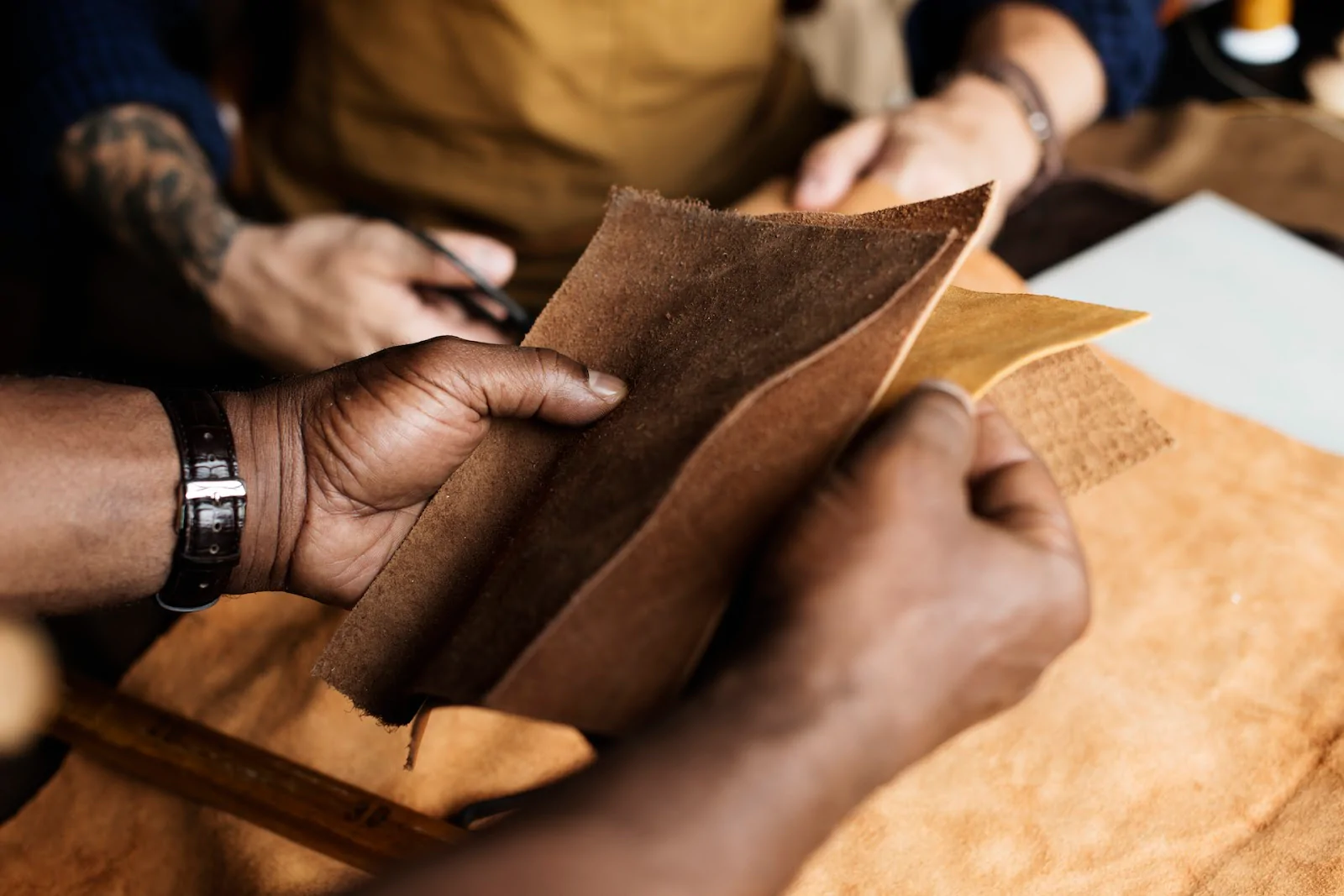
Why Italian Leather is the Best
There are a lot of different leather products out there, and different types of leather to go with them. But in the industry, it is a truism that Italian leather is the best in the business. Why is that, and how did Italian leather become so highly regarded? Here is a brief explanation, and reasons why you should care if you’re interested in buying leather goods!
What does it mean to be “Italian Leather”?
The short answer is leather made in the country of Italy. While that simple answer is technically correct, it doesn’t capture the full picture. For starters, truly high quality Italian leather is characterized by a few key features. It is full-grain, which is the highest cut of leather possible. It is tanned using a quality mix of products, with an emphasis on vegetable tanning, which gives the leather an especially supple feeling. These are essential to getting the best quality Italian leather. Obviously, any leather produced in Italy could call itself “Italian leather”, but that doesn’t mean it automatically adheres to the high standard just described. It’s important to not just see the name “Italian”, but to check the history of the producer as well.
The History of Italian Leather
You might be surprised to hear that the history of Italian leatherworking goes back quite a ways! All the way back in the 8th century BCE, Italians were already developing the leatherworking techniques that would one day characterize the modern industry. From there, the next major step was the Roman Empire, which utilized leather goods for a wide variety of purposes. Under the mighty industrial power of the Rome, leather production was made even more complex, efficient, and wide spread. Centuries later, in the 13th century, professional guilds began to appear, one of which being leatherworking. The purpose of a trade guild was to codify the techniques of their craft, ensuring quality, and also protecting trade secrets to make sure their best techniques were kept within their regulated watch. This emphasis on quality control led to some of the most successful leatherworking organizations in the world, and eventually in more modern times, some of the biggest names in leather – like Gucci and Prada – followed in that ancient tradition to produce the best leather in the world.
How Italian Leather Became the Best
Which brings us to our time, and how that history led to the amazing leather we have now. One of the keys to the success of Italian leather is that historical context discussed earlier. The centuries of knowledge have been passed down from generation to generation, the techniques being refined and honed over time. That kind of historical knowledge is almost impossible to replicate, and thus is uniquely Italian. This refinement of technique has also led to increased specialization in the process of making leather. Each step became highly skilled, since the whole process was so thoroughly understood. And with increased specialization came increased quality. And that’s not all. While their ancient traditions are the backbone of their techniques, Italian leatherworks are also on the cutting edge of innovation. They are the largest producer of leather working technology in the world, and are always ready to incorporate new methods to improve their craft.
Why You Should Want Italian Leather Goods
Now that you know the history, it’s worth considering why you should care about it in the here and now. Fortunately, there are plenty of great reasons to want Italian leather goods! For a start, high quality leather goods are just beautiful to look at. The unique techniques of Italy make leather that has warm, natural looking colors that are extremely eye catching. But their best feature is that thanks to the refined tanning process, Italian leather goods actually get better the longer you have them. As they age, the leather will absorb the various materials it comes in contact with, and develop what is called a patina. This patina gives the leather a wholly unique which cannot be replicated, much like the heritage of Italian leatherworking knowledge itself. Besides aesthetics, Italian leather is also extremely durable. All that processing isn’t just for looks, and makes for some of the longest lasting leather in the world. A well-cared for leather good like this can literally outlast you, and remain gorgeous the whole time.

What Products Use Italian Leather?
So, now that you’re no doubt eager to get your hands on such a well-made and historically refined product, where do you actually find something made of Italian leather? There are several great options, so here are a few key ones:
- Handbags – One of the best things to use Italian leather on is handbags. Not only are they something almost everyone can use in their everyday life, the high-quality leather will mean that once you have a great handbag, you’ll probably be able to use it forever.
- Fashion Accessories – But it’s not just handbags. Other clothing and fashion accessories are also amazing when made of Italian leather. Examples include belts, jackets, and shoes. These are especially great, as their durability means they’ll resist weather and frequent use.
- Other Goods – Besides just looking good, the durability of Italian leather means its great for other, more practical purposes. Some key examples in include wallets, furniture upholstery, and even office accessories let desk mats. It’s a truly lovely and versatile material!
Always Check the Source
Now that you know how great Italian leather is, and where to look for it, here’s a final word of caution: always check the source of your leather goods! Since any leather from Italy can just be called “Italian leather”, you can’t be sure if you’re getting the good stuff at face value. Also, an Italian company might produce the good, but outsource the leather from somewhere else. Don’t settle for inferior products!
Bottom Line
Genuine Italian leather is a luxury good that is worth the expense. It’s quality will last for years to come, and look amazing!




